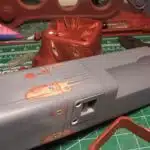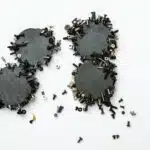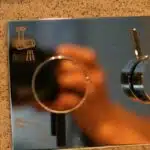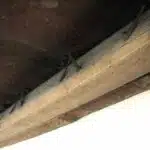As a zipper repair technician, I have seen countless clients come to me with the same problem: a stuck or separated zipper. This can be an incredibly frustrating experience, especially if it happens at an inconvenient time or in a crucial situation. However, there are steps that you can take to fix your zipper and avoid having to replace it altogether.
In this article, we will explore some common reasons why zippers become stuck or separated, as well as provide step-by-step instructions for how to fix them. Whether you are dealing with a jammed coat zipper or a broken backpack zipper, these tips will help you get back on track and save both time and money in the process. So let’s get started and learn how to become your own zipper repair expert!
Understanding How Zippers Work
Did you know that zippers have been around for over a century? In fact, they were first patented in the United States in 1851. Since then, zippers have become a ubiquitous part of our lives, from clothing to luggage to tents and beyond. While they may seem simple, understanding their anatomy and functionality is crucial to fixing them when issues arise.
Zipper anatomy consists of two main parts: the teeth and the slider. The teeth are interlocking pieces that allow the zipper to open and close smoothly when pulled by the slider. The slider is responsible for moving up and down the teeth, either bringing them together or separating them. There is also a pull tab attached to the slider that provides leverage for opening and closing the zipper.
The functionality of a zipper can be affected by a variety of factors. For example, dirt or debris can get caught in between the teeth or inside the slider, causing it to stick or not function properly. Additionally, worn or damaged teeth can prevent proper engagement with the slider. Understanding these common issues is essential when diagnosing and repairing zipper problems. So let’s move on to discussing some of these common causes of zipper issues!
Common Causes Of Zipper Issues
Understanding how zippers work is crucial in identifying and addressing common zipper problems. As a zipper repair technician, it is important to know the different types of zippers and their functions. This knowledge will help you determine the appropriate troubleshooting tips to fix stuck or separated zippers.
One of the most common zipper problems is when the slider gets stuck, making it difficult to open or close the zipper. This issue can be caused by dirt or debris that accumulates on the teeth of the zipper or a bent slider. To fix this problem, you can use a toothbrush to remove any dirt or debris that may be causing friction between the teeth of the zipper. If this doesn’t work, you can try using pliers to gently straighten out any bends in the slider.
Another common issue with zippers is when they separate at the bottom, making it impossible to zip up clothing or bags. This problem often occurs due to wear and tear on the teeth of the zipper or a damaged slider. Troubleshooting tips for this issue include replacing the slider altogether or repairing broken teeth with pliers. It’s important to note that these solutions may only serve as temporary fixes and that ultimately, replacing the entire zipper may be necessary.
Assessing the severity of a problem is crucial in determining whether a quick fix will suffice or if replacement is necessary. When faced with more complex issues such as broken teeth or missing sliders, it may be best to seek professional help from a trusted repair shop. By following these troubleshooting tips, you’ll have an easier time fixing common zipper problems and ensuring optimal performance from your zippers over time.
Assessing The Severity Of The Problem
Zipper damage evaluation is a crucial step in fixing a zipper. Before proceeding, it is important to assess the severity of the problem. You can do this by examining the zipper and identifying any signs of damage such as missing teeth or broken sliders. Additionally, you should check for obstruction inside the zipper that may be causing it to stick or separate.
If your zipper has only minor damage such as a few missing teeth, then you can easily fix it with some pliers and replacement teeth. However, if there are major damages like broken sliders or excessive wear and tear, then repairing it may not be an option. In such cases, replacing the entire zipper is recommended. It’s best to consult a professional for this kind of repair work.
Assessing the severity of the problem is essential when dealing with a malfunctioning zipper. This will help you determine if you need to replace or repair your zipper. Remember that some damages may not be visible on the surface so it’s always best to double-check before proceeding with any repairs. Once you have evaluated the extent of damage, you can move on to preparing your zipper for repair.
Preparing The Zipper For Repair
Assessing the severity of the problem is crucial in determining the necessary steps to fix a zipper. Once you have identified the issue, it’s time to prepare the zipper for repair. Before proceeding with any repair technique, it’s important to clean the zipper thoroughly. Zipper cleaning involves removing dirt, dust, and other debris that may be causing the malfunction.
To clean your zipper, use a soft-bristled brush or toothbrush to gently scrub along both sides of the teeth. Make sure to remove any debris trapped between the teeth or inside the slider. Avoid using harsh chemicals or abrasive materials as they can damage your zipper further. Once cleaned, you can proceed with repairing your zipper.
Zipper maintenance tips are essential in avoiding frequent repairs and prolonging the lifespan of your zippers. Regularly lubricating your zippers is one such tip that can keep them functioning smoothly. Using a lubricant like silicone spray or beeswax on both sides of the teeth can reduce friction and prevent jamming or snagging. Additionally, avoid overstuffing pockets or forcing zippers to close as this puts unnecessary strain on them.
Using zipper lubricant is an effective way of maintaining your zippers’ functionality and preventing malfunctions. By keeping your zippers clean and well-lubricated, you can avoid having to replace them frequently and save time and money in repairs. Remember to follow proper maintenance practices for all your clothing and gear with zippers to ensure their longevity.
Using Zipper Lubricant
Zipper Lubricant: Types and Benefits
Zipper lubricant is a type of product that can be used to fix a stuck zipper. There are different types of zipper lubricants available in the market, such as silicone-based, wax-based, and oil-based products. Each type of lubricant has its own benefits and drawbacks.
Silicone-based lubricants are popular because they are easy to apply and dry quickly. They also do not leave any residue behind, which is great for people who want a clean look after fixing their zipper. Wax-based lubricants, on the other hand, provide long-lasting protection against friction and wear. They are ideal for zippers that are frequently used or exposed to harsh weather conditions. Oil-based lubricants are another option that provides excellent protection against rust and corrosion but may leave stains on clothing.
Alternative Methods for Fixing a Stuck Zipper
If you do not have access to zipper lubricant or prefer alternative methods for fixing your stuck zipper, there are other options available. One common method is using a graphite pencil or soap bar to rub along the teeth of the zipper. This helps reduce friction between the teeth and allows them to slide more easily. Another option is using pliers or tweezers to gently pull on the teeth of the zipper until it moves freely.
Using an alternative method for fixing your stuck zipper may work temporarily but may not provide long-term solutions like using a specialized product like zipper lubricant would. It is important to note that forcing the zipper can cause further damage, so it is recommended to use gentle pressure when trying these alternative methods.
Applying a Wax or Candle
If you decide to try applying wax or candle as an alternative method for fixing your stuck zipper, make sure to choose white-colored wax without dyes that can stain clothing items. Rubbing wax along both sides of the teeth should help ease them apart without damaging them further. Be careful not to over-apply wax, as this could cause the zipper to become too slippery and slide open on its own. After applying the wax, gently pull on the slider until it moves freely along the teeth.
Applying A Wax Or Candle
Did you know that every year, over 3.5 billion zippers are produced worldwide? That’s a lot of zippers that could potentially get stuck or separate! As a zipper repair technician, it’s important to have multiple techniques in your arsenal to fix any zipper problem that comes your way. One effective method for fixing a zipper is applying wax or candle.
When using the waxing technique, start by selecting an appropriate wax or candle. Be sure to choose a wax that will not stain the fabric of the item with the stuck or separated zipper. Apply the wax directly onto the teeth of the zipper, making sure to cover both sides evenly. Next, gently move the slider up and down over the waxed area until it moves smoothly along the track.
If you don’t have access to wax or candle, there are alternative lubricants you can use such as petroleum jelly or bar soap. These methods work similarly to applying wax but may require more frequent application since they tend to wear off faster. Whichever method you choose, be sure to wipe away any excess lubricant and test out your newly fixed zipper before using it on your favorite jacket or bag.
To continue repairing your stuck or separated zipper, the next section will cover how to use pliers or tweezers to fix any bent teeth or missing parts.
Using Pliers Or Tweezers
After applying wax or candle on the zipper teeth, the next step is to try pulling the zipper up and down. If it still doesn’t work, then you need to use some tools to fix it. One of these tools is a pair of needle nose pliers. These pliers can be used to grip the slider and wiggle it back into place.
Using needle nose pliers, grip the slider and gently move it back and forth until you feel resistance. Then try moving the zipper up and down again. If it still doesn’t work, try using tweezers with rubber grip instead. These will allow you to get a better hold on smaller parts of the zipper.
Tweezers with rubber grip are perfect for fixing stuck zippers when you can’t seem to get a good hold on them with your fingers alone. They allow for precision movements without causing any damage to the zipper teeth or fabric. Once you’ve got a good grip on the slider, wiggle it back into place until it’s aligned properly with the teeth. This will help ensure that your zipper works smoothly once again.
Realigning The Zipper Teeth
Zipper teeth realignment is an essential part of fixing a stuck or separated zipper. If the teeth are misaligned, it can cause the slider to get stuck, making it difficult to zip up or down. To realign the zipper teeth, you will need to gently tug on the fabric around the teeth until they are in their proper place. Make sure that every tooth is aligned correctly before attempting to zip up or down.
If realigning the zipper teeth does not solve the problem, you may need to replace the zipper slider. A broken or worn out slider can prevent the zipper from working correctly. To replace the slider, start by removing it from the zipper tape using pliers. Then, insert a new slider onto the tape and carefully align it with the teeth. With gentle pressure, slide the new slider up and down to ensure that it moves smoothly along the teeth.
In summary, realigning your zipper teeth and replacing your zipper slider are two effective solutions for fixing a stuck or separated zipper. With some patience and attention to detail, you can repair your zipper yourself without having to seek professional help. However, if these methods fail to work or if you do not feel comfortable performing these repairs on your own, seek out a skilled technician who can provide you with additional guidance on how to fix your malfunctioning zipper.
As we move forward in repairing our zippers, we’ll now address how to replace a missing zipper pull.
Replacing A Missing Zipper Pull
In the previous section, we discussed how to fix a zipper that is stuck or separated. However, sometimes the zipper pull may be entirely missing, making it impossible to zip and unzip your garment. This can be frustrating, but don’t worry; there’s a solution to this issue. In this section, we’ll discuss how to replace a missing zipper pull.
Firstly, you need to source materials for your new zipper pull. You can purchase replacement zipper pulls from most fabric stores or online retailers. Alternatively, you can use DIY alternatives such as keyrings, paper clips, or even a piece of string tied in a loop. However, keep in mind that these DIY options may not be as durable as store-bought replacements.
Once you have your replacement pull ready, attach it to the remaining metal slider on the zipper tape by threading it through the hole and pulling it tightly. Voila! Your zipper is functional again. With just a few simple steps and minimal materials required, you can save yourself the hassle of replacing an entire garment just because of a missing zipper pull.
Transitioning into our next section about sewing the zipper tape, it’s important to note that if your zipper is still experiencing issues even after replacing the pull, there may be an underlying problem with the teeth or slider. In such cases, sewing the tape may be necessary to ensure proper functionality of your garment’s zipper.
Sewing The Zipper Tape
- Threading a zipper involves the careful insertion of a needle and thread through the zipper’s fabric tape.
- Sewing zipper tape involves securing the zipper’s two sides of fabric tape with a continuous stitch.
- When repairing a stuck zipper, the technician must ensure that the needle and thread are capable of passing through the zipper’s fabric tape.
- Zipper repair technicians must also ensure that the stitches used to secure the zipper’s two sides are of an adequate length.
Threading A Zipper
As a zipper repair technician, I understand the frustration of encountering issues with zipper threading. It can be disappointing to have a perfectly functioning zipper tape only to struggle with threading the slider onto the teeth. Fortunately, there are several techniques you can use to thread a zipper like a pro.
One of the most common issues with zipper threading is that the slider won’t move past a certain point on the tape. If this happens, it’s often due to misaligned teeth or fabric caught in between them. Gently tug at each side of the tape while wiggling the slider back and forth until it passes over any obstacles. Alternatively, you can try using pliers to fix misaligned teeth or carefully snipping away any fabric caught in between them.
Another issue that can arise when threading a zipper is misaligned teeth at the bottom stopper. This is where the tape ends and prevents the slider from coming off completely. To fix this issue, gently wiggle and twist the slider until it moves past the bottom stopper without forcing it too hard. If necessary, you can also use your fingers or pliers to adjust any bent teeth or remove debris caught in between them.
In conclusion, mastering proper zipper threading techniques and troubleshooting any related issues is crucial for efficiently repairing stuck or separated zippers. By following these simple tips and tricks, you’ll become a pro at threading zippers in no time!
Sewing Zipper Tape
As a zipper repair technician, it’s important to know how to properly sew the zipper tape onto garments or accessories. While threading the tape onto the slider is crucial for proper functionality, sewing the tape onto the fabric is what keeps everything in place. There are several techniques you can use to sew zipper tape effectively, including hand-sewing and using a sewing machine.
Hand-sewing is one of the most common ways to attach zipper tape to fabric. This method is ideal when dealing with delicate fabrics that may be damaged by a sewing machine needle. To hand-sew zipper tape, start by placing the right side of the fabric facing up and laying the zipper face down on top of it. Pin the tape in place along both sides of the teeth and use a needle and thread to sew it onto the fabric using small stitches.
Alternatively, if you have access to a sewing machine, you can also use this tool to sew your zipper tape into place quickly and efficiently. When using a sewing machine, it’s important to ensure that your needle is compatible with both your fabric and your chosen zipper tape alternatives. Additionally, make sure that your sewing foot allows for easy maneuvering around bulky parts of your garment or accessory. Sewing machines provide an excellent alternative for those who want fast results without sacrificing accuracy or durability.
Incorporating these methods into your repertoire will help you become an expert at attaching zipper tapes for all types of repairs or projects. With practice and patience, anyone can learn how to master this skill and provide exceptional service to their clients or customers alike!
Fixing A Separated Zipper
When a zipper is separated, it means that the teeth of the zipper are no longer connected. One possible solution to this problem is to manually reconnect the teeth by gently pulling them back together. However, if this does not work, it may be necessary to replace parts of the zipper.
Replacing parts of a zipper can be done by purchasing replacement sliders or stops. A slider is the part of the zipper that moves up and down when opening and closing it, while a stop holds the slider in place at either end. To replace these parts, remove any old or broken pieces and attach the new ones in their place. It is important to make sure that you purchase the correct size and type of replacement parts for your specific zipper.
If attempting to fix a separated zipper through manual reconnection or replacement parts does not work, seeking professional help may be necessary. A professional repair technician can identify any underlying problems with your zipper and recommend appropriate solutions. Additionally, they have access to specialized tools and equipment that may not be available to individuals attempting repairs on their own.
Next, we will discuss how to remove a stuck zipper without causing damage to either the zipper or the surrounding fabric.
Removing A Stuck Zipper
Fixing a Separated Zipper is an easy task, but what if your zipper is stuck? Unzipping and zipping can become a major hassle when you have to tug and pull on the zipper constantly. A stuck zipper can be caused by a number of things, from debris trapped in the teeth to worn out sliders. Fortunately, there are simple techniques that can help you remove a stuck zipper without damaging your garment.
Firstly, try using a lubricant to loosen the zipper teeth. You can use household items such as soap or candle wax as a quick fix solution. If those don’t work, consider using specialized lubricants such as silicone spray or beeswax. These products help to coat the teeth and make it easier for them to slide past each other.
If lubrication does not work, it may be time to remove some of the residue that has built up on your zipper over time. Removing zipper residue requires careful attention and patience since any damage could render your garment unwearable. DIY zipper repair kits come with all the necessary tools for removing residue safely and effectively, so it’s worth investing in one if you’re planning on fixing multiple zippers.
To avoid future issues with stuck zippers, preventative maintenance tips are essential. One tip is to keep your zippers clean by wiping them down after every use. You should also avoid overloading pockets with heavy items since this puts more pressure on zippers and makes them more prone to getting stuck. Finally, always check for debris before trying to zip up your garment – this will save you from having to deal with a stuck zipper later on!
Preventative Maintenance Tips
Zipper longevity is important for ensuring that your zippers remain in good condition for as long as possible. Regular cleaning of your zippers is crucial to their longevity, as it helps prevent dirt and debris from accumulating in the zipper teeth. Dirt and debris can cause a zipper to stick, jam, or even break entirely.
To clean your zippers, start by wiping them down with a dry cloth to remove any loose dirt or debris. Then, use a soft-bristled brush to gently scrub away any remaining dirt or debris. Be sure to focus on the teeth of the zipper, as this is where most dirt and debris tend to accumulate. Once you have finished brushing your zippers, wipe them down once again with a dry cloth to remove any remaining debris.
In addition to regular cleaning, there are other preventative maintenance tips you can follow to keep your zippers in good condition. These include avoiding overstuffing your bags or pockets, as this can put extra strain on the zippers and cause them to wear out more quickly. Additionally, be careful not to force a zipper closed if it is stuck or jammed, as this can cause damage to the teeth or slider. By following these tips and maintaining your zippers regularly, you can help ensure that they remain in good working condition for years to come.
When it comes to caring for your zippers, prevention is always better than cure. By taking care of your zippers through regular cleaning and preventative maintenance measures such as those discussed above, you can avoid many common issues that can arise over time. However, if you do encounter problems with your zippers despite following these tips and best practices, don’t hesitate to seek professional help from a qualified technician who has experience repairing all types of zipper-related issues.
When To Seek Professional Help
- When it comes to zipper repair, it is important to understand when to seek professional help.
- A damaged zipper can usually be fixed by simply cleaning up the teeth and re-aligning them.
- A broken zipper may require the replacement of the slider or the entire zipper itself.
- A stuck zipper can be freed by lubricating it with a product specifically made for zippers.
When To Seek Professional Help
As a zipper repair technician, I understand the appeal of trying DIY methods to fix a stuck or separated zipper. However, there are instances where seeking professional help is necessary. If you have tried all the possible DIY solutions and still cannot fix the zipper, it may be time to consider professional repair. Additionally, if the cost of purchasing tools and materials for DIY exceeds the cost of professional repair, it would be more economical to seek help from a professional.
When considering whether to seek professional help, it is important to assess the severity of the problem. A small issue like a loose slider or missing tooth can be easily fixed with DIY methods. On the other hand, if your zipper teeth are broken or completely detached from one side, it will require expert attention. Attempting to fix severe damages without proper knowledge and tools can further damage the zipper and make it unrepairable.
Lastly, if you value your time and effort, seeking professional help is a wise choice. Repairing zippers takes patience and skill that not everyone possesses. By leaving it in the hands of professionals, you save yourself from frustration and stress that comes with unsuccessful attempts at repairing a stubborn zipper. Remember that while DIY methods may seem cheaper at first glance, they can end up costing more in time and money in case of mistakes made during repairing process.
In conclusion, knowing when to seek professional help for your zipper problems is crucial for its longevity and maintaining its functionality. While DIY methods can be effective for minor issues, severe damages require expert attention to avoid further damage or complete replacement of your garment. When assessing whether to seek professional help, consider factors such as cost-effectiveness and severity of damage before making a decision that best suits your needs.
Damaged Zipper
When it comes to zipper repair, a damaged zipper can be a frustrating problem. It is important to note that not all damaged zippers are beyond repair, but some may require professional attention. A common issue with zippers is when the teeth become misaligned or broken, preventing the zipper from closing properly. In such cases, DIY methods like using pliers to realign the teeth may work temporarily. However, if this does not work or if you notice missing teeth or significant damage to the slider or pull tab, seeking professional help for zipper replacement would be your best bet.
Zipper replacement requires more than just matching the size and color of the original zipper. It also involves removing the old zipper and attaching a new one correctly without damaging the garment. This process can be complicated and time-consuming, especially for someone who has never done it before. Zipper repair kits are available in most stores as an alternative to professional help, but they may not always provide a reliable solution as each garment may have unique requirements.
In summary, while minor zipper damages can be fixed with DIY methods, it is important to know when to seek professional help for more complicated issues like missing teeth or significant damage to the slider or pull tab. While zipper repair kits may seem like an easy solution, they do not guarantee reliability and risk further damaging your garment if done incorrectly. Therefore, seeking expert assistance for zipper replacement is highly recommended for ensuring its longevity and functionality while also preserving your valuable clothing item.
Conclusion And Final Thoughts
Now that you know when to seek professional help for zipper repair, let’s talk about the option of fixing it yourself. DIY repairs can be cost-effective and rewarding, but they may not always be the best choice. Before attempting a repair on your own, consider the complexity of the problem and your experience with sewing or fixing zippers. Small fixes like reattaching a zipper pull or replacing a slider can be done at home with some basic tools and knowledge. However, if your zipper is severely damaged or needs a complete replacement, seeking professional help may save you time and money in the long run.
When comparing DIY repairs to professional repairs, cost is often a major factor. DIY repairs can save you money in terms of labor costs, but keep in mind that purchasing necessary tools or materials can add up quickly. Additionally, if a DIY repair goes wrong, you may end up spending more money to fix the mistake or replace the item altogether. Professional repairs often come with a warranty and guarantee of quality workmanship, which could save you from future expenses.
If you decide to attempt a DIY repair on your zipper, here are some tips to keep in mind:
- Use high-quality tools and materials to ensure longevity.
- Start by identifying the problem area and determining if it can be fixed at home.
- Take your time and work slowly to avoid making mistakes.
- If you get stuck or feel unsure about something during the process, seek guidance from online tutorials or consult a professional.
Remember that while DIY repairs can be satisfying and cost-effective, they aren’t always the best option for complex problems or expensive items. Consider all factors before deciding whether to tackle a repair on your own or seek professional help.
Conclusion
Zipper repair is a crucial skill that can save you time and money. It is essential to understand how zippers work, the common causes of zipper issues, and how to assess the severity of the problem. Zipper lubricant can be an effective solution for fixing a stuck or separated zipper.
Removing a stuck zipper requires patience and attention to detail, but with the right tools and techniques, it can be done successfully. Preventative maintenance tips such as keeping zippers clean and dry can help prolong their life.
As a zipper repair technician, I have seen firsthand the frustration that can come with a broken zipper. However, repairing a zipper is not always easy and may require professional help if the issue is severe. Remember to assess the severity of the problem before attempting any repairs.
In conclusion, understanding how zippers work, assessing the severity of the problem, and using appropriate tools and techniques are essential for fixing stuck or separated zippers. While preventative maintenance can help prolong their life, seeking professional help may be necessary for more severe issues. As a zipper repair technician, my goal is to provide you with reliable solutions so that you can avoid being caught in an awkward situation with a broken zipper.
Image Credits
- “Fishnet and Zippers” by TwitchyLizard (featured)


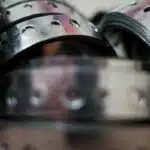



![How To Clean A Wax Warmer 6 [1425] Wax Moth (Galleria mellonella)](https://green-life.blog/wp-content/uploads/2023/05/TlTgCqusrajq-150x150.jpg.webp)







